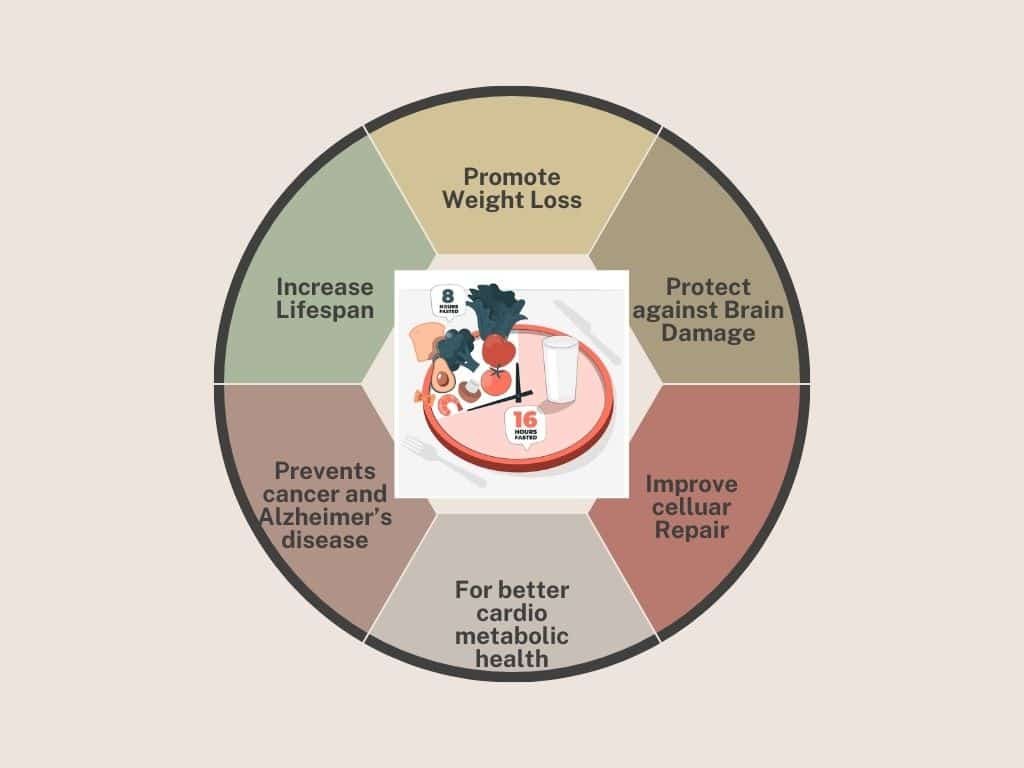Wake Up Refreshed
Waking up each morning feeling refreshed, with a clear mind brimming with energy, and a body that flows harmoniously with its natural rhythms is a longing many share. This ideal is not merely a pipe dream, countless individuals are realizing this vision through the transformative practice of intermittent fasting (IF). Dr. Andrew Huberman, a distinguished neuroscientist at Stanford University, has extensively explored the mechanisms of IF, illuminating how this method can accelerate fat loss while also promoting longevity and overall well-being. Get the best about Huberman Intermittent Fasting and his insights.

Understanding Intermittent Fasting
Intermittent fasting transcends the label of a mere diet fad; it is a deliberate and strategic approach to eating that harmonizes with our body’s inherent biological rhythms. At the heart of IF lies the concept of alternating between specific periods of eating and fasting. This cyclical eating pattern allows the body to tap into its stored energy reserves while initiating vital healing and cellular repair processes that are crucial for maintaining optimal health. IF has numerous health benefits which are most required to have a healthy lifestyle.
The Science Behind Fasting
When we consume food, our bodies embark on a careful process to break down carbohydrates into glucose, which serves as a key source of energy. Insulin, a hormone produced by the pancreas, plays a vital role in facilitating the uptake of this glucose into our cells. However, when we enter a fasting phase, insulin levels experience a significant decline, prompting our bodies to pivot from relying on glucose to burning stored fats for energy, a phenomenon known as lipolysis. This vital metabolic shift not only aids in effective fat loss but also enhances our metabolic flexibility, allowing our bodies to adapt and thrive under varying energy demands.

Through this powerful method of eating, many find themselves not just achieving their physical health goals but also fostering a deeper connection with their bodies, experiencing life with invigorated clarity and purpose.
Dr. Andrew Huberman Intermittent Fasting
Dr. Andrew Huberman, a neuroscientist and professor at Stanford University, has extensively discussed the benefits of intermittent fasting (IF) and how it impacts fat metabolism, metabolic health, and brain function. His insights, grounded in neuroscience and physiology, emphasize the importance of aligning eating patterns with the body’s circadian rhythms—the internal biological clock that regulates sleep, hormone production, and metabolism.
By synchronizing meal timing with the body’s natural cycles, intermittent fasting can optimize various health outcomes, including improved fat-burning, better insulin sensitivity, and enhanced cognitive performance. Dr. Huberman also underscores that meal timing matters just as much as meal composition, making it essential to follow an eating window that supports the body’s natural rhythm.
Time-Restricted Eating (TRE) – The Most Accessible Form of Intermittent Fasting
One of the most practical and widely adopted forms of intermittent fasting is Time-Restricted Eating (TRE). Unlike other fasting methods that focus on caloric intake reduction, TRE emphasizes when you eat rather than how much you eat.
How TRE Works
TRE involves consuming all daily calories within a set time window, typically 8 to 12 hours, while fasting for the remaining 12 to 16 hours. A common TRE schedule might be:
Eating window: 11 a.m. – 7 p.m. (8-hour eating window)
Fasting window: 7 p.m. – 11 a.m. (16-hour fasting window)
This approach allows the body to shift into a fasting state during the non-eating period, unlocking various physiological benefits.

Dr. Huberman’s Personal Routine
Dr. Huberman himself follows a modified TRE schedule, typically delaying his first meal until 11 a.m. or noon and finishing his last meal by 8 p.m. This pattern helps him for a good reason with the best benefits
Optimize metabolic health by reducing insulin spikes.
Align meal timing with his energy levels and work schedule.
Support cognitive function by avoiding early-morning blood sugar fluctuations.
Benefits of Intermittent Fasting According to Dr. Huberman
1. Enhanced Fat Metabolism
When the body remains fasted for an extended period, it depletes stored glycogen (the body’s primary energy source) and begins to burn fat for fuel. This process, known as lipolysis, enhances fat oxidation and promotes weight loss.
Fasting promotes ketone production, an alternative energy source that fuels the brain and muscles.
Longer fasting periods increase the body’s reliance on stored fat, making it easier to maintain a healthy body composition.

2. Improved Insulin Sensitivity & Blood Sugar Regulation
Frequent eating and high-carb meals cause frequent insulin spikes, which can lead to insulin resistance, a key factor in type 2 diabetes. TRE helps regulate insulin levels, allowing cells to respond more efficiently to glucose. A study from Harvard Medical School found that intermittent fasting improved insulin sensitivity by 20-30% within a few weeks.
Lower fasting insulin levels improve the body’s ability to handle sugar.
Reduced post-meal glucose spikes decrease inflammation and oxidative stress.
Studies indicate that fasting can reduce diabetes risk by improving blood sugar control.

3. Optimized Cognitive Function
Dr. Huberman often highlights the mental clarity and focus that comes with fasting. Research suggests that fasting:
Increases levels of brain-derived neurotrophic factor (BDNF), a protein essential for learning and memory.
Reduces brain fog by minimizing inflammation.
Improves dopamine regulation, leading to better concentration and motivation.
This cognitive boost makes TRE especially beneficial for individuals in high-focus professions or those who need sustained mental performance.
How to Implement Intermittent Fasting
Embarking on an intermittent fasting (IF) journey requires more than just skipping meals, it’s about strategic planning, self-awareness, and aligning fasting with your lifestyle and health goals. Whether you’re a beginner or looking to fine-tune your approach, these steps will help you implement IF effectively while ensuring long-term success.
1. Choose the Right intermittent fasting schedules or Methods
Intermittent fasting is not a one-size-fits-all approach, it comes in multiple variations, each offering different levels of flexibility and benefits. Selecting a method that aligns with your daily routine, energy levels, and personal preferences is crucial.
Here are some of the most popular IF protocols:
A. 16/8 Method (Most Popular and Beginner-Friendly)
How it works: You fast for 16 hours and consume all your calories within an 8-hour eating window.
Example: Eat between 12 p.m. and 8 p.m. and fast from 8 p.m. to 12 p.m. the next day.
Best for: People looking for steady weight loss, improved metabolism, and better digestion without extreme restrictions.
Why it works: During the fasting period, your body switches from burning glucose to burning fat for energy, leading to fat loss and increased energy levels.
B. 5:2 Diet (Flexibility with Some Caloric Restriction)
How it works: You eat normally for five days a week and limit calorie intake to 500-600 calories on two non-consecutive days.
Example: Normal eating on Monday, Tuesday, Thursday, Saturday, and Sunday, while Wednesday and Friday involve calorie restriction.
Best for: People who prefer a less rigid fasting structure and want the benefits of fasting without daily time constraints.
Why it works: The low-calorie days create a caloric deficit, promoting weight loss, insulin sensitivity, and cellular repair without extreme deprivation.
C. Alternate-Day Fasting (For Those Comfortable with Longer Fasts)
How it works: You alternate between eating normally one day and fasting the next day. On fasting days, some people consume only water, black coffee, or tea, while others allow a small calorie intake (under 500 calories).
Best for: Individuals looking for rapid fat loss and improved metabolic flexibility while being comfortable with longer fasting periods.
Why it works: The body continuously cycles between fed and fasted states, triggering autophagy (cellular repair), improved digestion, and better energy utilization.
Tip: If you’re new to fasting, start with a 12-hour fasting window and gradually extend it to 14 or 16 hours as your body adapts.
2. Align Eating Windows with Natural Rhythms
Dr. Andrew Huberman emphasizes that meal timing should align with our circadian rhythm—the body’s natural 24-hour cycle that regulates hormones, metabolism, and sleep-wake patterns. Eating at irregular times (especially late at night) can disrupt digestion, spike insulin levels, and interfere with quality sleep.
How to Align Eating with Your Natural Rhythms
Eat during daylight hours: Aim to consume meals between sunrise and sunset when metabolism is naturally more active.
Avoid eating too late at night: Late-night meals can impair melatonin production, disrupt digestion, and lead to poor-quality sleep.
Start eating a few hours after waking up: This stabilizes cortisol (the body’s natural wake-up hormone) before introducing food.
Stop eating at least 2-3 hours before bedtime: This supports better digestion and helps prevent acid reflux, bloating, and restless sleep.
Tip: If your schedule permits, an ideal eating window could be between 10 a.m. and 6 p.m. or 12 p.m. to 8 p.m., ensuring food intake aligns with energy levels.
3. Prioritize Nutrient-Dense Foods
Intermittent fasting isn’t just about when you eat, it’s also about what you eat. A poor diet filled with processed foods, refined sugars, and unhealthy fats can counteract the benefits of fasting, leading to fatigue, cravings, and poor metabolic health.
To maximize the benefits of IF, focus on a high-quality, healthy low fat diet, and nutrient-dense foods that keep you energized, satisfied, and nourished.
Essential Nutrients for an IF Diet
✔ Lean Proteins (Support Muscle Maintenance & Metabolism)
Chicken, turkey, lean beef
Eggs
Fish (salmon, tuna, sardines)
Plant-based proteins (tofu, tempeh, lentils)

✔ Healthy Fats (Provide Long-Lasting Energy & Support Brain Health)
Avocados
Nuts & seeds (almonds, walnuts, chia seeds, flaxseeds)
Olive oil, coconut oil, ghee
✔ Complex Carbohydrates (Boost Energy & Digestion)
- Whole grains (quinoa, brown rice, oats)
- Sweet potatoes
- Legumes (chickpeas, black beans)
✔ Fruits & Vegetables (Supply Vitamins, Minerals & Antioxidants)
- Berries, oranges, apples, bananas
- Leafy greens (spinach, kale, broccoli)
- Cruciferous vegetables (cauliflower, Brussels sprouts)
Tip: Avoid refined sugars, processed snacks, and high-calorie junk foods, as they disrupt insulin levels and can lead to energy crashes.
4. Stay Hydrated
Fasting periods can lead to dehydration, fatigue, and hunger pangs if you’re not consuming enough fluids. Hydration is crucial for maintaining optimal energy levels, digestion, maintaining blood volume, and overall well-being.
Best Hydration Practices During IF
✔ Drink plenty of water throughout the day (aim for at least 2-3 liters).
✔ Black coffee & unsweetened tea can be consumed during fasting to boost metabolism and suppress appetite.
✔ Electrolytes (sodium, potassium, magnesium) are essential, especially if you’re sweating a lot or feeling weak during fasting.
✔ Herbal teas (peppermint, chamomile, green tea) can soothe digestion and reduce hunger.
Tip: If you feel lightheaded during fasting, try adding a pinch of salt to your water like an electrolyte drink to replenish lost energy.
5. Listen to Your Body
Intermittent fasting is not about extreme restriction, it’s about balance. While some people thrive on a 16-hour fast, others may feel better with a 12-hour window. The key is to pay attention to your body’s signals and adjust accordingly. The human body is designed in a way that can be controlled perfectly but only when we listen to it and fulfill the rightful needs.

Signs You’re Fasting Effectively
✔ Stable energy levels throughout the day
✔ Improved mental clarity and focus
✔ Reduced cravings and better appetite control
✔ Better digestion and metabolic health
Secret Book of Intermittent Fasting for Women
Are you ready to break free from exhausting diets and take control of your health in a way that truly works? Intermittent Fasting for Women, now available on Amazon Kindle, is more than just a guide—it’s your personal roadmap to sustainable weight loss, boundless energy, and total well-being. Designed specifically for women, this book unravels the science-backed strategies that align fasting with your body’s natural rhythms, helping you balance hormones, rev up metabolism, and supercharge mental clarity.
Inside, you’ll find easy-to-follow fasting plans, meal guides, and powerful success stories to keep you motivated every step of the way. Whether you’re a beginner or looking to optimize your fasting routine, this book will give you the tools to thrive, not just survive. Your journey to vibrant health starts now!
Download Intermittent Fasting for Women on Kindle today and take the first step toward the healthiest version of YOU!
Potential Challenges and Considerations of IF
While intermittent fasting (IF) offers a range of benefits, from improved metabolic health to enhanced mental clarity, it’s not without its challenges. Adjusting to a new eating schedule, maintaining social flexibility, and ensuring adequate nutrition are all factors that need careful consideration. Understanding potential roadblocks in advance can help you navigate them effectively and sustain IF as a long-term habit.
1. Initial Hunger and Cravings
One of the most common challenges when starting intermittent fasting is feeling intense hunger or experiencing cravings—especially in the first few days or weeks. This happens because your body is used to frequent meals and has been relying on glucose (sugar) as its primary energy source. When you reduce meal frequency, your body takes time to switch to using stored fat for fuel.
2. Social and Lifestyle Factors
While fasting offers many health benefits, social gatherings, work events, and personal schedules can sometimes conflict with a strict eating window. This can make it challenging to stay consistent without feeling like you’re missing out.
Common Scenarios
✔ Dinner with friends or family gatherings: If your fasting window ends early in the evening, social events may disrupt your schedule.
✔ Work commitments: Business meetings or long shifts might interfere with planned mealtimes.
✔ Traveling and time zone changes: Eating schedules can get thrown off when crossing time zones or adapting to a new environment.
3. Monitoring for Negative Effects
Intermittent fasting is a powerful tool, but it’s not a universal solution. Some individuals may experience unwanted side effects, which often indicate the need for adjustments in fasting duration, meal quality, or overall caloric intake.
Common Challenges and Their Fixes:
A. Fatigue and Low Energy
Why it happens: You might not be eating enough calories during your eating window or lacking key nutrients.
How to fix it:
Ensure meals contain enough protein, fats, and complex carbohydrates.
Eat enough number of calories, fasting isn’t about severe calorie restriction.
Prioritize sleep and stress management to avoid burnout.
B. Mood Swings and Irritability
Why it happens: Blood sugar fluctuations or stress-induced cortisol spikes can make you feel irritable.
How to fix it:
Eat balanced meals with sufficient fiber, protein, and fats.
Stay hydrated – dehydration can contribute to mood swings.
Get quality sleep – poor sleep intensifies irritability.

C. Nutrient Deficiencies
Why it happens: If meals lack vitamins and minerals, long-term fasting may lead to deficiencies.
How to fix it:
Focus on whole, nutrient-dense foods instead of ultra-processed options.
Consider a multivitamin or electrolyte supplement if needed.
Include colorful vegetables, nuts, seeds, and lean proteins in your meals.
Tip: If you experience persistent fatigue, dizziness, or other concerning symptoms, consult a doctor or nutritionist to tweak your fasting plan.
Enhancing Intermittent Fasting with Complementary Practices
Athletic Greens (AG1) & Micronutrient Support
Dr. Huberman frequently recommends Athletic Greens (AG1) as a convenient way to cover essential micronutrient needs. Since fasting reduces food intake, ensuring sufficient vitamins, minerals, probiotics, and adaptogens is crucial.
Best Time to Take AG1? Morning, on an empty stomach. It supports gut health, energy, and immune function while being fasting-friendly.
Regular Physical Activity
Engaging in regular exercise can amplify fat loss and improve metabolic health. Both aerobic activities and resistance training are beneficial. Dr. Huberman notes that exercising in a fasted state may enhance fat oxidation.
Fasted workouts (exercising before eating) may boost fat oxidation and increase growth hormone production.
Strength training helps preserve muscle mass, preventing muscle loss while fasting.
Aerobic exercises (walking, running, cycling) complement IF by enhancing fat metabolism.
Tip: If doing intense workouts, schedule them before your first meal so your body can refuel post-exercise
Mindfulness and Stress Management
Chronic stress can negatively impact metabolic health. However, incorporating mindfulness practices, such as meditation or yoga nidra can help reduce cortisol (stress hormone) levels. Also, walking in natural sunlight enhances circadian rhythms, improving sleep and energy levels.
Adequate Sleep
Quality sleep is foundational to health. Maintaining a consistent sleep schedule and creating a restful environment can enhance the benefits of intermittent fasting.
- Inadequate sleep disrupts fasting benefits by increasing cravings and impairing insulin sensitivity.
- Stick to consistent sleep schedules and limit blue light exposure before bed.
- Ensure 7-9 hours of restful sleep to support metabolism and cognitive function.
Tip: Going to bed slightly hungry (but not starving) may promote better sleep and enhance fasting benefits.
Real-Life Success Stories
Many individuals have transformed their health through intermittent fasting. Here are a few inspiring cases:
1. The Entrepreneur’s Fat Loss Journey
A Silicon Valley entrepreneur struggled with erratic meal timings and constant snacking due to his busy schedule. After adopting the 16/8 method and aligning his meals with his circadian rhythm, he not only shed 15 pounds of fat but also reported increased mental clarity during work hours. His fasting window also improved his blood glucose levels, reducing mid-day energy crashes.
2. The Athlete Optimizing Performance
A professional endurance athlete experimented with time-restricted eating to enhance his fat oxidation and metabolic flexibility. He followed a 12-hour fasting window, ensuring that his food intake supported recovery and lean muscle mass. After months of following this schedule, he noticed higher energy levels, reduced inflammation, and improved endurance performance.
3. The Biohacker’s Experiment with Longevity
A 45-year-old biohacker, inspired by Dr. Huberman and Dr. Satchin Panda’s research at the Salk Institute, combined intermittent fasting with cold showers, yoga nidra, and natural light exposure in the morning. The results? A significant drop in blood sugar levels, improved gut microbiome diversity, and better cardiovascular health.
These real-world cases highlight how intermittent fasting can positively impact physical and mental health when tailored to an individual’s lifestyle and needs.
Huberman’s Advice on Common Myths and Mistakes
Intermittent fasting has gained mainstream popularity, but misconceptions persist. Dr. Huberman, in various Huberman Lab podcast episodes, has addressed these myths:
1. “You Can Eat Anything During the Eating Window”
While fasting regulates insulin sensitivity and caloric intake, consuming excessively processed foods, sugars, and unhealthy fats negates these benefits. A high-fat diet rich in whole foods, lean proteins (like ground beef and whey protein), and fiber is essential for optimal metabolic health.
2. “Fasting Leads to Muscle Loss”
A common concern is losing lean muscle mass while fasting. However, research shows that protein synthesis remains active if individuals consume adequate amino acids and protein during their eating window. Weight training and proper caloric intake further prevent muscle breakdown.
3. “Intermittent Fasting is Only for Weight Loss”
Beyond fat loss, fasting impacts the gene systems of the body, nervous system function, and cognitive health. Recent studies on non-human primates and humans suggest it may even slow aging-related declines in brain function.
The Future of Intermittent Fasting Research
With growing interest in time-restricted feeding, clinical trials, and biological studies continue to uncover its full potential. Researchers, including Dr. Panda and Dr. Huberman, emphasize that further research is needed to refine fasting schedules for different age groups, medical conditions, and activity levels.
Some emerging areas of research include:
Fasting and the Gut Microbiome: Studies suggest that a restricted feeding window may improve gut health by promoting beneficial bacteria.
Intermittent Fasting and Brain Function: Ongoing research is examining how fasting affects growth hormone production, neurotransmitters, and mental clarity.
The Role of Artificial Light in Fasting: Exposure to artificial light at night may disrupt the body’s hour cycle, potentially affecting fasting benefits.
Conclusion
Intermittent fasting is not a one-size-fits-all approach—its effectiveness depends on factors like lifestyle, goals, and biological responses. However, research from Stanford University, the Huberman Lab, and the Salk Institute strongly supports its positive impact on metabolic health, fat loss, and longevity.
If you’re considering intermittent fasting, start small, perhaps with a 12-hour fasting window, and adjust based on your energy levels and well-being. Track your progress through blood tests, food logs, and personal reflection. However, always consult with a certified nutritionist before proceeding IF.
As Dr. Huberman often says in his podcast episodes, “The single best thing you can do for your healthspan is to understand the timing of your food intake and its connection to your body’s natural rhythms.”



